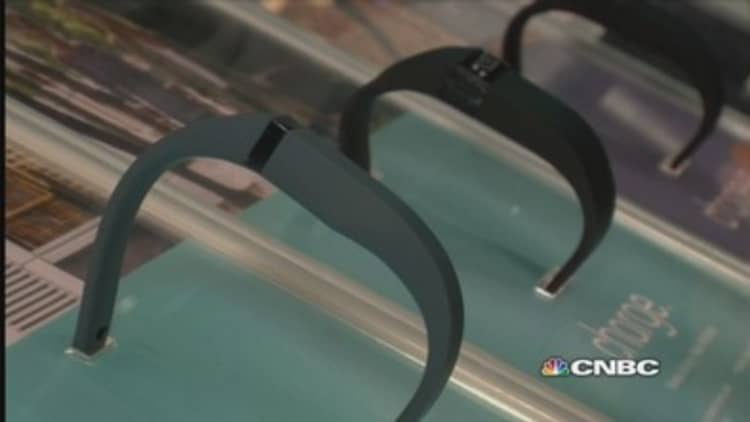Here's a surprisingly easy and low-tech way to predict who's most likely to have a heart attack or stroke: measure their grip.
A large study of nearly 140,000 people from 17 different countries found a clear and consistent link between grip strength and death from any cause, but especially from heart attack and stroke. It is a better predictor than blood pressure and could be a cheap, quick way for doctors to screen out who needs the most attention.
Read More17M breast cancer screenings atrisk
It's not a new idea, but this is by far the biggest study to look at it, and the first to look at people from all over the world.
"This study really strengthens the case for using grip strength as a marker," said Dr. Bob McLean of Harvard Medical School's Institute for Aging Research, who was not involved in the study.
Dr. Darryl Leong of McMaster University in Hamilton, Canada, and colleagues studied 139,691 people 35 to 70 years old for four years. They were all taking part in a larger study of health in cities and the countryside.
The researchers found that for every 10 or so pounds of lost grip strength, people had a 16 percent higher risk of dying within the four years of any cause. They were 17 percent more likely to die of heart attack or stroke and 7 percent more likely to have a non-fatal heart attack.
More from NBC News:
58 dead in factory blaze: Victims found hugging
Greece shines light on Nazi era in search for cash
Secret Service agents likely drunk: Watchdog
The link was clear even when the researchers accounted for age, education, employment, physical activity, and tobacco and alcohol use, the team reported in the Lancet medical journal.
"Grip strength could be an easy and inexpensive test to assess an individual's risk of death and cardiovascular disease," Leong said in a statement. "Further research is needed to establish whether efforts to improve muscle strength are likely to reduce an individual's risk of death and cardiovascular disease."
Read MoreHungover? Pedialyte wants your business
What bothers experts is that it is not immediately clear why hand strength would correlate with heart disease risk. High cholesterol levels suggest that the arteries are gradually getting clogged; high blood pressure indicates that artery walls are being damaged. But grip strength?

"It's really unclear what the mechanism would be that would connect hand grip strength to a stroke, for example," said McLean. "Perhaps the musculoskeletal system, being one of the largest organ system in body, a lot of age-related change takes place within it. It could be a general marker of age-related changes."
Dr. Jack Guralnik, a gerontologist at the University of Maryland School of Medicine, did a similar study more than a decade ago and agrees.
"It's a marker for what is going on in the rest of the body," Guralnik said. "I think if you are physically fit, you will have better grip strength and better strength in all your muscles than someone who is not fit. It's an indirect measure."
Doctors know, for instance, that frailty predicts who's closer to dying. Among seniors, those who start to fall down more frequently are closer to death. But this study included young adults. And grip strength was not associated with the risk of falling.
"If you were to ask me from American Heart Association's perspective, we would say this is not ready for routine clinical use…"
Guralnik believes it would be a suitable test for primary care physicians to do as part of a regular exam. "It's so easy to do," he said.
But Dr. Elliot Antman of Brigham & Women's Hospital, who is current president of the American Heart Association, isn't so sure.
"They did a measurement with a specific device, a dynamometer, which is not used in clinical practice," he said. "This is a very precise measurement of grip strength. It requires using a standardized protocol, and a trained research team using the device. While it's not terribly complicated, it is challenging in terms of training people how to use it."
Antman would like to see clear guidelines before suggesting any physician use such a method.
Read More500,000 Americans spend $50K on medicine eachyear
"If you were to ask me from American Heart Association's perspective, we would say this is not ready for routine clinical use, and would strongly urge that it be reproduced by an independent group and see if this could be translated into routine clinical practice," he said.

